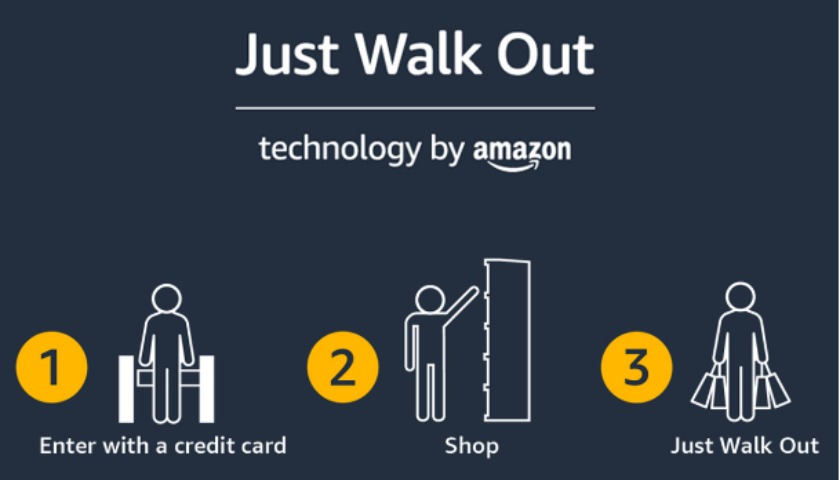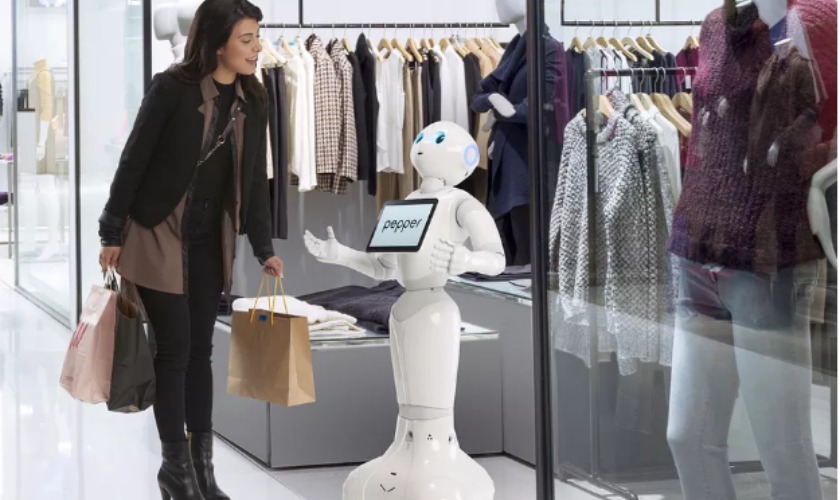The pandemic has emerged as a defining factor in rewriting the rules of retail. Instead of waiting and watching for a new normal, the retail industry has initiated a transform-or-perish response amidst uncertainty. Physical stores, in particular, have witnessed considerable disruption due to the sudden shifts caused by the pandemic. This has translated into reimagining the store of the future.
Due to COVID-19, almost 60% of retail square footage in the United States was forced to temporarily shut down. Amidst the global recovery and reset, retailers have had to limit their high touch services. They have incorporated more experiential spaces that align with new consumer demands. At the same time, the industry has witnessed a surge in digitally-driven transactions. This has given mobile payments, delivery app downloads, and buy-online-pick-up-in-store (BOPIS) a major push.
The changes over the past year have prompted more retailers to enhance the in-store operations and experience for customers through advanced technologies.
For this reason, the store of the future will be agile, convenient, and will provide hyper-personalized experiences to shoppers. Here are the key technologies that will play a major role in making it a reality.
Rapid demand response
COVID-19 has challenged retail companies globally in more than one way. According to Deloitte insights, over 65% of consumers prefer brand availability over brand preference amid stockouts due to the pandemic. Retailers don’t have relevant historic data to model for the rapidly changing consumer demands and the existing products on the shelf.
Then again, different geographies have been impacted differently due to local restrictions and ‘reset’ ordeals. Thus, retailers should look at data at a more granular level to make informed decisions moving forward.
The need of the hour for all retailers is to predict the continuous shifts in consumer demands effectively. Machine learning-based demand forecasting is a powerful tool for retail businesses to optimize customer and supplier relationship management.
Since such tools can be implemented in physical stores quickly, demand forecasting is actively sought after by retailers to improve their logistics and sales in the store of the future.
Data collection:
With ML-based demand forecasting, retailers can collect data about new market behavior and detect shifts in demand patterns. To enhance forecast accuracy while navigating the pandemic, retailers need to utilize short-term POS data and NLP technology. This can help them understand the shifts in market trends and consumer sentiment.
ASICS, for example, has recently witnessed that most of their e-commerce sales now come from smaller towns. This has motivated them to open offline stores in these towns by the end of this year.
Personalized product recommendations:
AI and ML algorithms can detect consumer’s preferences and gather insights to help retailers plan promotions and meet product demands thereby increase sales.
For example, Walmart’s US-based physical stores have deployed a forecasting system that can help crunch historical sales data every week. The tool can generate demand forecasts for over 500 million item-by-store combinations.
Furthermore, data gathered during the COVID-19 pandemic can be used by retailers as a training dataset to a forecasting model. This can help them make more accurate predictions in case of repeated crises in the future.
Contactless stores
Brick- and- mortar retail witnessed major operational shifts during COVID-19. According to Shekel Brainweigh’s consumer survey, 87% of customers are likely to shop from offline stores that provide contactless or self-checkout options. This is one of many identified shifts in the shopping habits fuelled by the COVID-19 pandemic. Tech-driven contactless shopping is a fitting solution for the store of the future.
To illustrate, NYC-based experiential retail store Showfields has popularized the use of smartphones amongst shoppers. This is to facilitate contactless payment, virtual store tours, and video shows. Visitors can use their app to add items to a virtual cart while shopping for faster, frictionless checkouts.
Scan-and-go:
A zero-touch retail path means implementing digital tools such as RFID tags, IoT, and facial recognition in stores. This will enhance consumer safety as well as their shopping experience. Offline stores can implement scan and go mobile technology and AI-based computer vision to form a self-checkout system.
Target is one such retailer that’s allowing customers to use their digital Wallet to self-checkout from anywhere in the store using its mobile app.
Detailed product information in-store:
Access to detailed product information is almost synonymous with digital shopping. Savvy retailers are taking this feature to the offline world through smart apps. Existing technologies such as AI, barcode, and QR code scanning can display product details on their mobile devices.
For instance, Sephora uses an AI-based app that allows customers to see how makeup products will look on them, without physically touching the product.
Just walk out:
Amazon Go has developed a cashier-less Just Walk Out system. This tool works on a combination of sensor fusion, computer vision, and deep learning. Just Walk Out detects what products shoppers take from or return to the shelves. A track of the activity is stored in a virtual cart. After shopping, the customers can leave the store and their credit card is charged for the purchase.

Assisted shopping 2.0 with robots
Robots are becoming the first customer touchpoint in retail stores. ABI Research has predicted that by 2025, over 150,000 mobile robots will be deployed in brick-and-mortar retail stores. These robots will continue to help retailers improve their in-store operations.
From welcoming customers and personalizing experiences in-store, to minimizing defects in logistics and analyzing customer paths in-store, robots are taking the in-store experience to the next level.
Inventory scanning:
Home improvement retailer Lowe introduced LoweBot to enhance inventory scanning and help shoppers find products in a jiffy. Warehouse robots can increase the efficiency of inventory management, be it shelf-scanning, assisting store associates, or product image sensing.
To illustrate, Effi-BOT, DHL’s fully-automated trolley can handle multi-order picking, create an interactive inventory-tracking process, and assist manual pickers in the warehouse.
Interactive robot:
Robots are helping retailers create an interactive experience for shoppers. Humanoid robots may emerge as the next big thing for the same reason. Softbank has employed robot Pepper to verbally interact with customers, answer their questions, and direct them in store. The company says that Pepper helped the store, B8ta, increase its store footfall by 70 percent in a pilot project.

Autonomous robot delivery:
Last-mile delivery robots are seeing exponential growth amidst a call for distancing. Chinese delivery app Meituan Dianping has already deployed autonomous vehicles to deliver grocery orders to customers in Beijing in February.
3D hologram displays
While online shopping continues to evolve, retailers are now coming up with alternative innovation to maintain in-store footfall. 3D hologram is one of them.
By 2025, the holography technology market is expected to reach $6.5 B globally. Mannequins and people are gradually being replaced by holograms to welcome customers and provide shopping assistance.
In fact, 3D holographic visuals of products can positively impact brand storytelling and make shopping fun. No extra hardware requirement means low operating costs. Plus, holograms gather attention instantly due to their novelty in the physical retail market. Moreover, customizable interactive holograms can personalize the customer experience by utilizing their shopping history data.
NYC-based Ralph Lauren store launched its first interactive, holographic window display to celebrate the release of its new sportswear line. The technology, combined with motion-sensing infrared cameras, was able to watch and replicate the movements of passersby.

Beyond floating brand logos and real-life mascots on store floors, retailers can leverage 3D holograms to display product promotions. The technology can be used to bring celebrities, influencers, and product knowledge experts around the globe to storefronts. The sense of presence created by integrated holographic display enhances brand storytelling and results in real, personal experiences.
There’s a promising future for brick and mortar retail with hologram technology making personalization more effective and long-lasting. Furthermore, the advent of 5G wireless technology will push retailers to display holograms in multiple places and for more applications.
Augmented and virtual reality for an immersive shopping experience
Goldman Sachs has estimated the AR and VR retail market to reach $1.6 B by 2025. With retailers actively exploring ways to improve customer engagement, augmented and virtual reality will pave the way for an immersive, informative, and highly personalized experience.
This suggests that AR and VR technology will disrupt conventional shopping dynamics by transforming the physical store into a virtual playground. Using navigation apps and electronic shelf beacons will ramp up retail experiences that blur the physical and digital environments.

Product Fitting:
With this innovation in fashion retail, customers can test out different clothing items virtually before purchasing them. Retailers like Macy’s and Adidas have deployed VR-powered fitting rooms for shoppers.
In-store layout:
Also, Adidas is also developing a VR app to allow customers to test its products based on weather conditions. IKEA has invested in AR to help consumers visualize home furnishings to fit the exact dimensions of living space.
Store owners are using AR/VR to visualize and redesign their stores before building the actual thing. For instance, if a supermarket store wants to upsell a product that may not be visible at eye-level, the store can leverage immersive technology to feature it without having to physically rearrange the product placements.
For instance, Toms Shoes created a Virtual Giving Trip campaign to immerse their in-store visitors in a one-for-one giving model. The idea was to give a free pair of shoes to a child in a developing country for every pair purchased by their customer. The 360-degree VR experience used a stereoscopic camera rig with binaural audio capture technology to provide users with a bird’s eye view of a remote part of Peru which was shot from a drone.
Thus, AR/VR technology can help store owners intelligently maximize footfall in the right place at the right time. Deploying an immersive installation can attract shoppers and help increase sales for key products.
Moving into 2021 and beyond, retail brands must consider creating real-time experiences that leverage human-centric-driven technology and innovation. The store of the future will leverage elevated in-person experiences as a key differentiator to compete with online retail platforms.
Thus, retailers must increase their risk appetite and explore innovative ways to integrate advanced technology in their stores. This will help enhance customer engagement and quickly meet their demands.
Understanding the impact of emerging technologies in your industry is imperative for developing future-ready strategies. Netscribes market intelligence solutions help global firms meet this need. To learn more, contact us.






